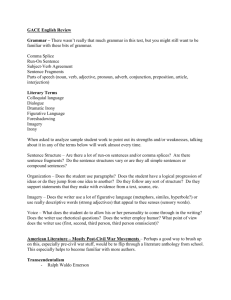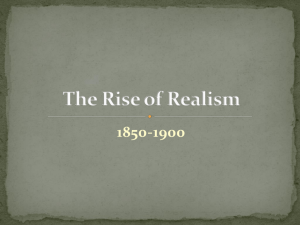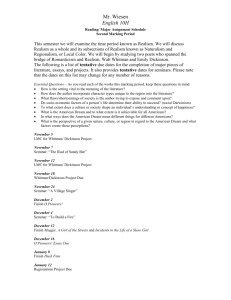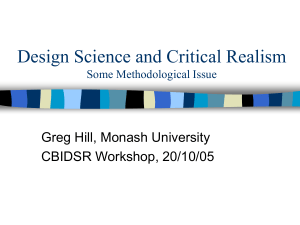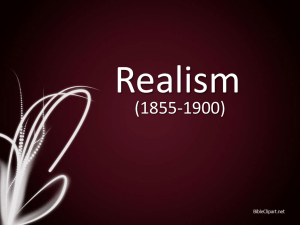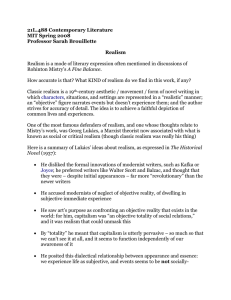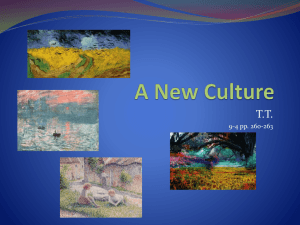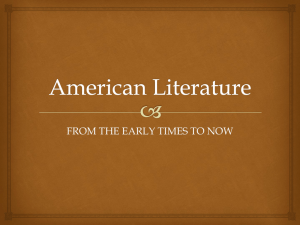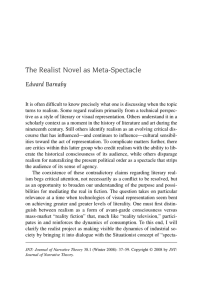The Civil War and Postwar Period
advertisement
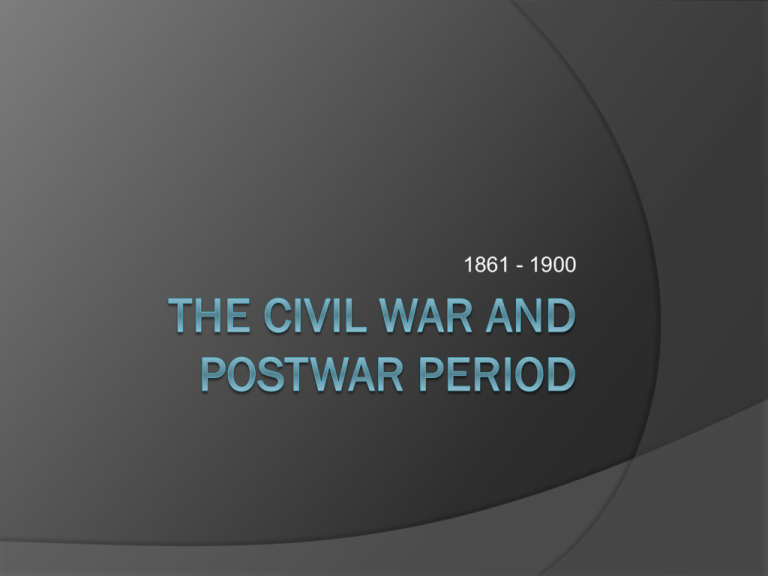
1861 - 1900 Causes for Civil War A variety of economic, political, and social differences between the North and South. Slavery was the core reason for the war. South needed a work force for exports South also needed the industrial North North regarded the Fed. Govt. as authority South championed states’ rights. Civil War begins w/Conf. attack on Fort Sumter North South Free Slaves States’ rights Preserve the Southern way of life Constitutional Union Historical Highlights The C.W. results in the deaths of over 600,000 Slavery abolished in 1865 Lincoln assassinated on April 14, 1865 Technology advanced with the invention of the telephone(1876), phonograph(1877), and the electric light bulb (1879) Literary Highlights Harriet Beecher Stowe – Uncle Tom’s Cabin – motivates the Fugitive Slave Act (1850) Frederick Douglass publishes his autobiography (1855) – fuels the antislavery cause Walt Whitman publishes his first edition of Leaves of Grass in 1855 Literary Highlights The literary movement of realism takes shape Emily Dickinson dies in 1886 – her poems are published after her death Response to war Idealism vs. Disillusionment What gave one writer optimism during this time gave another author pessimism. Whitman found heroism and a strength in the lives of the CW soldiers – witnessed the war first hand Melville stripped human nature bare and displayed humanity’s basic evil. War experience Few American writers experienced the war firsthand. Emerson stayed in Concord “knitting mittens” Thoreau (for Abolition) died in 1862 Hawthorne died in 1864 Dickinson stayed in her attic in Amherst Howell, James, and Adams were abroad Realism Dominated American fiction from the late 19th to the early 20th century. Realists sought to accurately portray real life without filtering it through personal feelings, romanticism, or idealism. New Generation of Writers Subjects came from the slums of cities Factories replaced farmland Corrupt politicians Prostitutes Roots of Realism – Europe Found in the following writers Daniel Defoe George Eliot Anthony Trollope Honore de Balzac Stendhal Gustave Flaubert Leo Tolstoy Realistic Novel The Red Badge of Courage was written by a man who was born six years after the Civil War ended. – Stephen Crane The American Romantics held an aversion for Realism The Realist writers emerged after the Civil War The Realist Novel Realism was used to explain why ordinary people behave the way they do. Subject matter relied on emerging sciences of human and animal behavior Biology Psychology Sociology Realism = Regionalism Regionalism was literature that emphasized a specific geographical setting and made use of the speech and mannerisms of the people in that region. Regionalism = Local Color Regionalists Sarah Orne Jewett – Maine Kate Chopin – Louisiana Harriet Beecher Stowe – New England Bret Harte – The West Mark Twain – Mississippi River Valley Mark Twain is the best –known example as a regional writer. He was first known as a regional humorist and then evolved into a writer of comic view of society with satiric qualities. His best novel, Huck Finn, describes the moral growth of a comic character. In an environment that is at the same time physically beautiful and morally repugnant. Realism vs. Naturalism An extension of realism. Naturalists relied heavily on psychology and sociology – tended to dissect human behavior. Influenced by Darwin’s theory of the survival of the fittest Outstanding naturalists – Theodore Dreiser, Stephen Crane, and Frank Norris Psychological Fiction Henry James is considered America’s greatest writer of this type of novel. Concentrated on the distinctions in character motivation.


